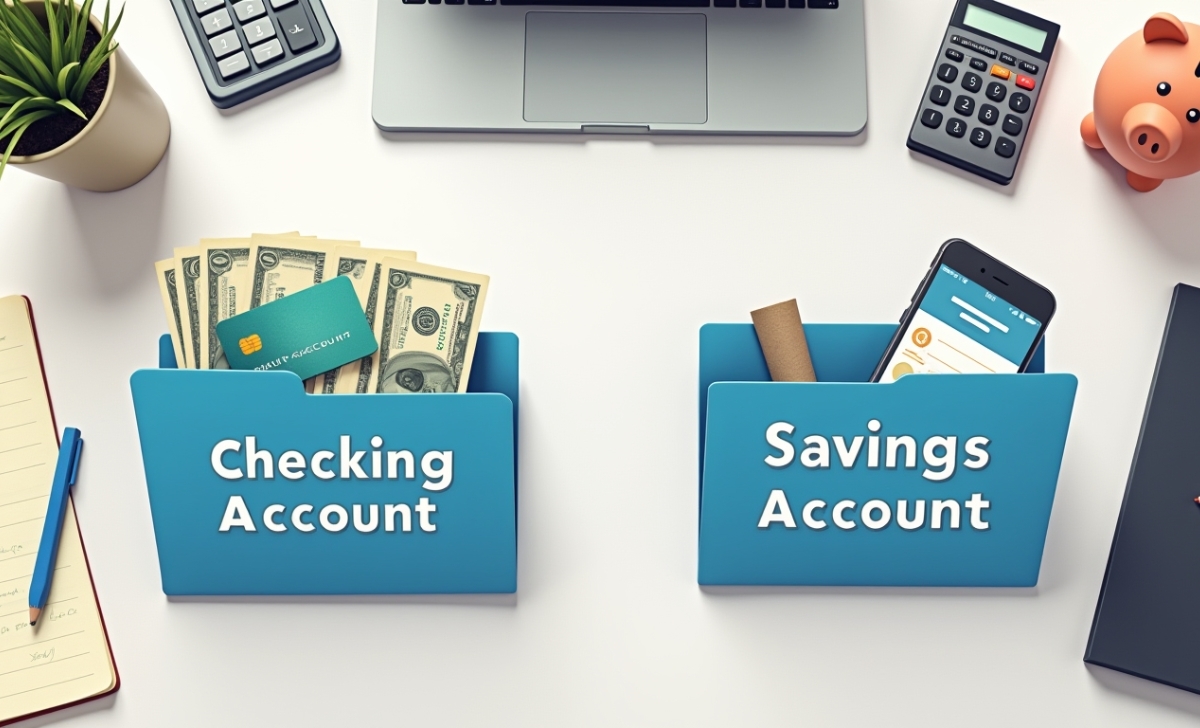Imagine a world where managing your money is easy and fun, all from your phone. This dream is becoming real with digital banking. It’s changing how we deal with money, making it simpler and more accessible.
My first time using a mobile banking app was amazing. I could move money, pay bills, and even invest with just a tap. It felt empowering and convenient. Millions of people feel the same way about digital banking.
By the end of 2023, there were 235 licensed digital banks worldwide. This shows how fast banking is changing. New tech like generative AI and Web 3.0 will make digital banking even better. Digital banks in Asia are already making money, showing their strong potential.
Key Takeaways
- The global count of licensed digital banks reached 235 by the end of 2023.
- Over 300 players now offer broader digital banking services.
- Technological advances like generative AI and Web 3.0 are driving fintech innovation.
- Digital-native banks in Asia have quickly turned profitable and continue to grow robustly.
- The evolution from traditional to digital banking enhances customer experiences and financial inclusion globally.
- The future of banking is defined by seamless integration of technology and customer-centric services.
Introduction to Digital Banking

The world is moving towards a tech-driven era, and digital banking is leading the way. It offers banking services online, unlike traditional banking. This change makes banking easier and faster for everyone.
The Evolution from Traditional Banking
Digital banking evolved from traditional banking, adding modern tech’s ease. Now, you can do things like deposits and loan applications online. This makes banking smoother and cuts down on mistakes.
Key Features of Digital Banking
Digital banking has many features that improve your experience. You can do transactions anytime, get personalized services, and even trade cryptocurrencies. It also has low fees and great savings rates. Opening an account or applying for loans is quick and easy.
To learn more, check out a detailed discussion on digital banking here.
Impact on Customer Experience
Digital banking has changed how we experience banking. It focuses on the customer, making banking more interactive. Automation and AI help solve problems quickly.
A 2015 study found that 47% of bankers think digital banking improves customer relationships. Over 60% of people prefer using smartphones for banking. This shows how important a mobile-first approach is. Digital banking is making banking better for everyone.
The Growth of Mobile Banking

Mobile banking has changed how we deal with money. It’s all thanks to the rise of mobile banking apps. These apps make banking easy and accessible, changing the way we manage our finances.
Rise of Mobile Banking Apps
Mobile banking apps are growing fast. A Forbes Advisor survey found 78% of Americans prefer mobile banking. By 2025, Statista says there will be 217 million digital banking customers in the U.S. This shows a big move towards digital banking.
Advantages of Mobile Banking
Mobile banking offers many benefits. It gives users constant access to their finances and personalized services. People love how easy it is to manage their money on their phones.
Also, 97% of customers are happy with their mobile banking experience, says the American Bankers Association. This shows how well mobile banking works and how much people enjoy it.
Future Prospects of Mobile Banking
The future of mobile banking looks bright. It will blend into our daily lives even more. New innovations will make banking better and easier.
79% of customers think digital banking is improving their experience. This means mobile banking will keep growing, making banking better and more satisfying for everyone.
How Fintech is Shaping the Future
Fintech solutions are key in the banking world, bringing new ideas and changing how banks compete. The fintech future shows a big impact on banking, changing how banks work and serve customers.
Role of Financial Technology (Fintech)
Financial technology has changed banking by adding new tech that makes things better and happier for customers. Technologies like AI and blockchain are making old banking systems new again. Big data and AI help watch risks and offer services that fit each customer’s needs.
Collaboration with Traditional Banks
Working together, fintech and banks are key to meeting new customer needs and dealing with rules. The EY Fintech Adoption Index shows 92% of Chinese banks and 52% of US banks are fast adopting fintech. These partnerships help make banking open and safe for everyone.
Fintech-driven Innovations
New fintech ideas are changing the financial world. Now, loans can be approved in minutes, and virtual payments are easy to use. AI helps fight fraud, and blockchain makes transactions safer.
As fintech keeps growing in banking, we can expect more automation, personalization, and efficiency. This will lead to a big change in financial services.
Generative AI in Banking

Generative AI is changing banking in big ways. It helps with customer service, fraud detection, and market growth. As cybercrime costs are expected to hit $10.5 trillion by 2025, using generative AI in banking is key to keeping things safe.
Impact on Fraud Detection and Risk Management
AI is making a big difference in fighting fraud. It looks through lots of data to find odd patterns. This helps banks like Wells Fargo and Bank of America catch fraud faster.
AI also helps with making decisions on loans and credit. It looks at past transactions to spot potential problems.
Personalized Customer Experiences
Generative AI makes banking more personal. Forrester says 72% of customers like products that fit their needs. Banks like RBC Capital Markets and PKO Bank Polski use AI to give customers advice and plans that match their goals.
Market Growth and Projections
AI is making the banking market grow. Banks that use AI see better productivity and more money. As AI in finance gets better, the banking world will see even more growth.
For example, Carta uses AI to work better and serve customers better. This shows how AI is changing banking for the better.
Exploring Digital Payments
Digital payment technology has changed how we do transactions. Now, we’re moving towards a world without cash. This change is happening fast, thanks to new tech and our desire for easy and safe ways to pay.
Adoption of Digital Payments Across Regions
Every part of the world is adopting digital payments at its own pace. In Europe, 70% of transactions were contactless by 2021. This shows a big move away from cash.
In the U.S., Zelle saw a huge jump in 2020, handling $307 billion in transactions. That’s a 58% increase from the year before. China is also leading with the digital yuan, using blockchain for smoother payments.
Technological Advancements in Digital Payments
New tech is making digital payments better and more common. Services like Santander’s One Pay FX and HSBC’s FX Everywhere are making international payments faster and safer. They use blockchain to manage big transactions well.
AI and machine learning, like Mastercard’s Decision Intelligence, are also improving security. They watch transactions in real-time to stop fraud.
Future of Cashless Transactions
The future of payments looks very digital. The mobile payment market is expected to grow to $3.1 trillion by 2024. This growth shows we’re moving away from cash.
Things like peer-to-peer payments and cryptocurrencies are becoming more popular. New tech like biometric authentication will make payments safer and easier.
Embedded finance is also on the rise. It combines finance with other services, thanks to AI and blockchain. This makes payments smoother and more efficient. For more on digital payments, check out the Debutify blog.
Trends in Digital Wallets
Digital wallets are getting more popular by the day. Almost 89% of Americans now use digital payments. About 62% of them use two or more forms. This shows how important digital wallets are in our financial lives today.
Popularity of Digital Wallets
More than two-thirds of Americans expect to use digital wallets soon. Platforms like Apple Pay and Google Pay make payments easy with just one click. Having all payment methods in one place makes it even more appealing.
Over a third of younger consumers, those aged 18-26, prefer digital wallets more than ever.
Also, 70% of users want to use digital wallets as their main way to pay. This shows how vital they are in our daily spending.
Security and Convenience Factors
Technologies like tokenization and encryption keep digital wallets safe. The U.S. Consumer Financial Protection Bureau is working to make them even safer. This ensures we can enjoy quick payments without worrying about security.
The value of transactions using digital wallets is set to hit over $16 trillion by 2028. This highlights their convenience. They make managing our money easier, which is why more people are choosing them.
Impact on Daily Financial Activities
Digital wallets are changing how we handle money every day. They offer convenience that traditional methods can’t match. In fact, 30% of people plan to use even more digital wallets soon.
- By 2025, over two-thirds of consumers will use digital wallets.
- In 2022, nearly 28% of U.S. consumers tried Buy Now, Pay Later services.
- The European Digital Identity Wallet aims to put all official documents in one place.
As digital wallets get safer and more convenient, more people will use them. This trend is expected to grow even more.
Read more insights on digital payments and wallet trends here
Embedded Finance and Its Impact

Embedded finance has changed how we get financial services. It blends financial products like loans, insurance, and payments into apps we use every day. This makes it easier for businesses to offer new services without building everything from scratch.
Integration into Non-financial Platforms
Financial services are now part of many apps, not just banking ones. This is true for retail, cars, homes, hotels, and phone services. Companies team up with banks or create their own finance tools to do this.
Benefits for Consumers and Businesses
For users, finance in apps means less hassle and more convenience. It makes shopping and paying bills easier. This leads to more people using these services, helping businesses grow.
For example, “buy now, pay later” options have made shopping online more appealing. They’ve increased sales by up to 30% in some stores. Also, using data to offer personalized services saves businesses a lot of money and time.
Future Outlook for Embedded Finance
Embedded finance is growing fast and will keep getting bigger. By 2030, it could make up 20 to 25% of banking sales and loans. Europe’s market alone is expected to hit over €100 billion by the end of the decade.
As tech gets better and more companies offer financial services, banking will change a lot. This will lead to a more open and digital world of finance.
The Role of Central Bank Digital Currencies (CBDCs)
Central bank digital currencies (CBDCs) are leading the way in financial innovation. With more countries adopting CBDCs, digital banking is set for a big change. By March 2024, three countries—Bahamas, Jamaica, and Nigeria—had fully launched their CBDCs, showing their dedication to new financial systems.
Global Adoption of CBDCs
Around the world, 90 percent of central banks are working on CBDC projects. This shows a huge interest in these digital currencies. Right now, 36 CBDC pilots are running globally, showing big efforts to add this digital asset to national economies.
Eight G20 countries have active CBDC programs, showing their strategic value. The BRICS nations (Brazil, Russia, India, China, and South Africa) are also looking into CBDCs to strengthen their financial systems.
Implications for Traditional Banking
CBDCs bring both benefits and challenges for traditional banking. On one side, they could help more people access financial services. In 2023, 6% of adults in the US had no bank account. Retail CBDCs could change how we get social benefits and make online payments, opening up new opportunities.
On the other side, central banks must keep control as more private digital assets appear. This could make their traditional roles less important.
Future Trends and Predictions
Looking ahead, CBDCs will likely change how we make payments and keep the financial system stable. Cash use has dropped by a third in Europe from 2014 to 2021. This shows we’re moving towards digital payments, making it crucial for central banks to create new payment systems.
Experts predict more digital transactions with CBDCs, focusing on security and stability. As central banks balance CBDCs with private digital assets, they must keep their currency systems strong and relevant worldwide.
Open Banking and API Integration
Open banking is changing the financial world, bringing many benefits and more power to customers. At the heart of this change are APIs, which make it easy for banks and other companies to share data. This teamwork helps build lively financial systems.
Advantages of Open Banking
Open banking helps both people and banks. It lets customers control their financial info better, leading to more tailored services and smarter money choices. Banks, on the other hand, face more competition and can innovate, keeping up with rules like the Second Payment Services Directive (PSD2).
API-driven Financial Ecosystems
APIs are key in building strong financial systems. They let fintech companies safely get bank data, offering cool services like instant alerts or easy account linking. For example, Alkami and Plaid’s partnership uses secure APIs, showing how fintech is growing fast and adding value.
Case Studies and Success Stories
Real examples show how open banking and APIs are making a difference. In the U.S., the Consumer Financial Protection Bureau is pushing for more open banking. Banks like Idaho Central Credit Union use Alkami APIs for quick updates, making services better. These stories show how open banking and APIs are changing the financial world, driving growth and new ideas.
For more info on how open banking and APIs are changing digital banking, check out this resource.
Sustainability and ESG Compliance in Banking

The banking sector is now focusing more on sustainable banking and ESG compliance. Banks worldwide are working to improve their banking sector sustainability. They aim to promote sustainable practices and meet environmental, social, and governance (ESG) standards.
Europe is leading with rules like the EU Sustainable Finance Disclosure Regulation (SFDR) and the EU’s Taxonomy Regulation. These rules aim to increase transparency and support sustainable finance. In the U.S., banks are under pressure to focus more on sustainable investing and lending.
Countries like Japan and South Korea are making big steps in ESG sustainability, thanks to government policies. China is focusing on green finance, with green lending principles and green bond standards. Brazil and South Africa are setting up strict ESG frameworks to attract foreign investors.
Green bonds and ESG-linked loans are promoting sustainability in banking. Digital tools help banks manage ESG data better. AI and analytics are used to integrate ESG risks into risk management, helping banks manage these risks proactively.
Implementing ESG compliance is a big challenge, including integrating it into old systems and balancing investments with returns. Banks also face issues like ensuring regulatory compliance and keeping data secure and private. To overcome these, banks are engaging with stakeholders, learning continuously, forming partnerships, and being transparent in their reporting.
Banks are also working on ESG data management. They are setting up central data platforms, creating ESG data models, and integrating ESG into core banking processes. This requires significant changes to IT infrastructure, like new climate risk models and ESG scorecards.
In summary, the banking sector’s commitment to banking sector sustainability through sustainable banking and ESG compliance is changing financial institutions. These efforts are crucial for meeting regulations and keeping customers loyal. They also help banks stay competitive in the market.
Challenges in Digital Banking Transformation
The shift to digital banking faces big hurdles. Banks struggle with complex rules, keeping data safe, and teaching people about new tech. These problems make it hard to achieve smooth banking changes.
Many banks still use old systems, which slows down their digital updates. For example, Bank of America had trouble launching a new payment service because of these old systems. Most banks use systems that are 5 to 10 years old, with only a few using newer ones.
Following strict rules also takes up a lot of time and resources. Almost half of the banks worry about meeting these rules. Rules like GDPR and CCPA make it hard to give customers what they want. Rules for fighting fraud and knowing who customers are also slow down digital services.
Integrating new tech with old systems is another big problem. About half of the banks struggle with this. Old systems caused a big problem at Wells Fargo, showing the need for change. Some big banks have even had to slow down their digital plans because of these issues.
Changing how a bank works is also tough. Banks find it hard to work together and be creative, with 62.5% saying it’s a big problem. Keeping skilled workers is also a challenge, with 33.5% saying it’s hard. Leaders need to set clear goals and use the right metrics, as McKinsey suggests. Facing these challenges head-on is key to success in digital banking.
Even with these challenges, the banking industry is expected to grow a lot. The growth rate is 19.1%, with spending reaching $3.4 trillion by 2026. Banks need to simplify things, change their culture, and use agile methods to succeed in digital banking.
Conclusion
The world of digital banking is changing fast, thanks to new tech. Convenience, efficiency, and personalization are key. The market is expected to grow from USD 8.2 billion in 2021 to USD 13.9 billion by 2026.
Artificial Intelligence (AI), Machine Learning (ML), and blockchain are leading the change. AI and ML help with fraud detection and customer service. Blockchain makes transactions secure and transparent.
Open banking is also important, making the financial world more connected. It uses open APIs to improve how banks work together.
The future of digital banking relies on new tech and strong security. Digital payments and mobile wallets are changing banking. Cloud computing, biometric authentication, and big data analytics will make banking better for customers.
These changes show that digital banking is not just about tech. It’s about making banking better for everyone.
FAQ
What are the key features of digital banking?
Digital banking uses technology to make banking easier. You can do banking tasks online or on your phone. It offers convenience, is always available, and lets you manage your money digitally.
How has fintech transformed traditional banking?
Financial technology (fintech) has changed banking by adding AI, blockchain, and APIs. These tools make banking more efficient and secure. Banks and fintech companies work together to meet customer needs and follow rules.
What role does AI play in digital banking?
Artificial Intelligence (AI) helps digital banking a lot. It spots fraud, manages risks, and gives personalized advice. AI makes banking better for customers by improving service and efficiency.
Why are mobile banking apps becoming more popular?
Mobile banking apps are popular because they’re convenient. They let you check your account anytime and track transactions. They make banking easy and accessible from your phone.
How are digital payments changing the financial landscape?
Digital payments are making transactions easier and safer. They’re part of a shift away from cash. This change is making financial systems more efficient and user-friendly.
What are the benefits of embedded finance?
Embedded finance blends financial services into other platforms. It makes banking easier and more accessible. It also helps businesses find new ways to make money.
What is the significance of Central Bank Digital Currencies (CBDCs)?
CBDCs are digital money issued by central banks. They offer a secure way to make payments. They could improve financial systems and help more people access money.
What advantages does open banking offer?
Open banking makes the financial world more open and innovative. It uses APIs to share financial data securely. This leads to more competition and new financial services.
How does sustainability and ESG compliance affect banking?
Sustainability and ESG are key for banks now. They show banks care about the environment and society. Banks are reducing their impact and gaining customer trust by following ESG standards.
What challenges do banks face in the digital transformation?
Banks face many challenges like rules, security, and getting customers to use digital banking. They need to innovate and adapt to succeed. It’s about making a smooth transition to digital banking.














